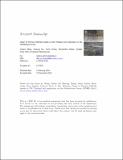Files in this item
Origin of Permian OIB-like basalts in NW Thailand and implication on the Paleotethyan Ocean
Item metadata
| dc.contributor.author | Wang, Yuejun | |
| dc.contributor.author | He, Huiying | |
| dc.contributor.author | Zhang, Yuzhi | |
| dc.contributor.author | Srithai, Boontarika | |
| dc.contributor.author | Feng, Qinglai | |
| dc.contributor.author | Cawood, Peter A. | |
| dc.contributor.author | Fan, Weiming | |
| dc.date.accessioned | 2017-12-31T00:37:11Z | |
| dc.date.available | 2017-12-31T00:37:11Z | |
| dc.date.issued | 2017-03 | |
| dc.identifier | 248657371 | |
| dc.identifier | acc3503b-d4ba-414f-84f1-274da2c9b26d | |
| dc.identifier | 85009375747 | |
| dc.identifier | 000397375400007 | |
| dc.identifier.citation | Wang , Y , He , H , Zhang , Y , Srithai , B , Feng , Q , Cawood , P A & Fan , W 2017 , ' Origin of Permian OIB-like basalts in NW Thailand and implication on the Paleotethyan Ocean ' , Lithos , vol. 274-275 , pp. 93-105 . https://doi.org/10.1016/j.lithos.2016.12.021 | en |
| dc.identifier.issn | 0024-4937 | |
| dc.identifier.other | RIS: urn:187BC55685C486ADA8A104BF83129C9B | |
| dc.identifier.uri | https://hdl.handle.net/10023/12399 | |
| dc.description | Financial support from National Science Foundation of China (41190073, 41372198 and 40490613), National Basic Research Program of China (2014CB440901 and 2016YFC0600303) and “the Fundamental Research Funds for the Central Universities to SYSU” are gratefully acknowledged. | en |
| dc.description.abstract | The basaltic rocks in NW Thailand belong to part of giant Southeast Asian igneous zone that delineates the extension of the Paleotethyan Ocean from SW China into NW Thailand. The Chiang Mai basaltic samples from the Chiang Dao, Fang, Lamphun and Ban Sahakorn sections are divisible into two groups of high-iron basalt. Group 1 has SiO2 of 38.30–49.18 wt.%, FeOt of 13.09–25.37 wt.%, MgO of 8.38–1.60 wt.%, TiO2 of 3.92–6.30 wt.%, which is rarely observed in nature. Group 2 shows SiO2 = 44.71–49.21 wt.%, FeOt = 10.88–14.34 wt.%, MgO = 5.24–16.11 wt.%, TiO2 = 2.22–3.07 wt.% and mg# = 44–70. Olivine and pyroxene are responsible for the fractionation of the Group 2 magma whereas low oxygen fugacity during the late-stage differentiation of the Group 1 magma prolonged fractionation of ilmenite and magnetite. The onset of ilmenite and magnetite fractionations controls the distinct differentiation commencing at MgO = ~ 7 wt.%. Both groups show similar REE and primitive mantle-normalized patterns with insignificant Eu, Nb-Ta and Zr-Hf anomalies. They have similar Nd isotopic compositions with εNd(t) values ranging from + 2.8 to + 3.7 and similar Nb/La, Nb/U, Th/La, Zr/Nb, Th/Ta, La/Yb, Nb/Th, Nb/Y and Zr/Y, resembling those of OIB-like rocks. The representative basaltic sample yields the argon plateau age of 282.3 ± 1.4 Ma, suggestive of early Permian origin. Our data argue for Group 1 and Group 2 are coeval in the intra-oceanic seamount setting within the Paleotethyan Ocean, which at least continued till 283 Ma. These data, along with other observations, suggest that the Inthanon zone defines the main Paleotethyan suture zone, which northerly links with the Changning-Menglian zone in SW China. | |
| dc.format.extent | 13 | |
| dc.format.extent | 1452673 | |
| dc.language.iso | eng | |
| dc.relation.ispartof | Lithos | en |
| dc.subject | Early Permian | en |
| dc.subject | Magma differentiation trend | en |
| dc.subject | OIB-like seamount basalt | en |
| dc.subject | Paleotethyan Ocean | en |
| dc.subject | NW Thailand | en |
| dc.subject | GE Environmental Sciences | en |
| dc.subject | DAS | en |
| dc.subject.lcc | GE | en |
| dc.title | Origin of Permian OIB-like basalts in NW Thailand and implication on the Paleotethyan Ocean | en |
| dc.type | Journal article | en |
| dc.contributor.institution | University of St Andrews. Earth and Environmental Sciences | en |
| dc.contributor.institution | University of St Andrews. School of Geography and Geosciences | en |
| dc.contributor.institution | University of St Andrews. Scottish Oceans Institute | en |
| dc.contributor.institution | University of St Andrews. St Andrews Isotope Geochemistry | en |
| dc.identifier.doi | 10.1016/j.lithos.2016.12.021 | |
| dc.description.status | Peer reviewed | en |
| dc.date.embargoedUntil | 2017-12-30 |
This item appears in the following Collection(s)
Items in the St Andrews Research Repository are protected by copyright, with all rights reserved, unless otherwise indicated.

